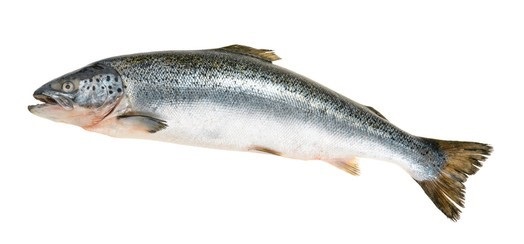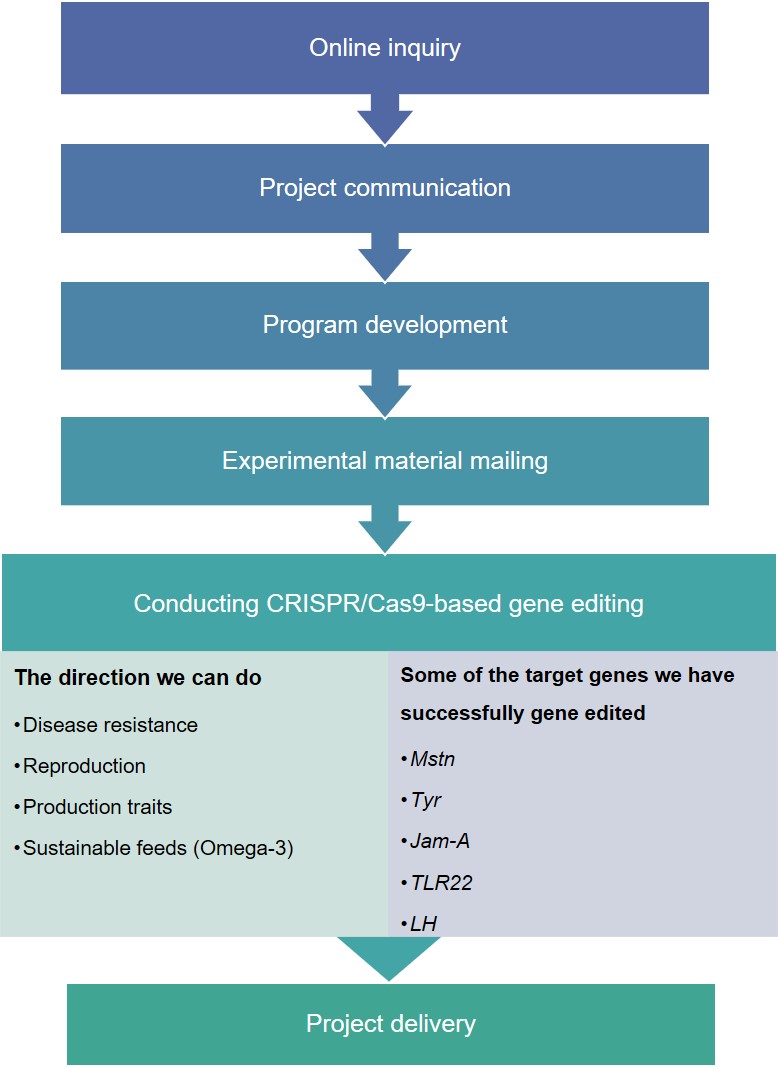Salmon refers to several species of fish in the Salmonidae family, mainly Salmo salar and Oncorhynchus spp. including O. kisutch, O. tshawytscha, O. kisutch, O. masou, O. gorbuscha and O. nerka.
The 2018 Food and Agriculture Organization of the United Nations global fish trade data show that salmon is the most traded fish commodity and is one of the important sources of economic income from fisheries in countries such as Japan, Canada, the United States, and Russia.
 Figure 1. A whole fresh salmon.
Figure 1. A whole fresh salmon.
In addition, salmon resources are important in their respective ecosystems. They provide food for a large number of predators, including whales, otters, birds, seals, bears, and many invertebrates, and provide nutrients for many terrestrial plants and animals after the anadromous return of spawning mortality and decay. While providing food, salmon transport nutrients from the ocean to freshwater habitats and play an important role in maintaining the structure, function, and processes of the stream and terrestrial ecosystems.
CRISPR/Cas9 technology services
Gene editing is now available to provide a new means of solving problems that hinder the development of fish farming. In salmon farming, two major bottlenecks have emerged that have limited the development of the industry. One is the genetic impact of farmed salmon on wild populations, which is considered to be the most long-term negative impact on the environment. The second and most serious problem is the parasitism of fish, which is highly concentrated in the ocean and which currently causes high mortality rates in wild salmon alone. The gene-editing offered by Lifeasible can address some of these issues, where salmon genetic traits are purposefully and positively altered to achieve specific phenotypes needed for production or research, such as enhancing disease resistance, doubling the growth rate of salmon, and increasing the production of omega-3 in salmon.
Genome editing technologies rely on genomic information of species that have been sequenced and annotated, and the lack of complete genomic information is currently a bottleneck for effective use of the technology in some fish species. However, the rapid development of high-throughput sequencing in recent years has allowed the comprehensive characterization of genomic information in several key species in aquacultures, such as tilapia, sturgeon, Pelteobagrus fulvidraco, salmon, and many others.

This has enabled Lifeasible to gradually establish a stable and efficient gene-editing platform based on CRISPR/Cas9 technology in these species. Some heritable traits are the focus of our projects to help our customers, such as sterility, virus resistance, and high active substance, as well as some production traits, are gradually being emphasized, such as fish color and growth rate, and the modification of these traits is driving these improved versions of fish into commercial production as soon as possible. For more information or any inquiry requirements, please contact Lifeasible.
Reference